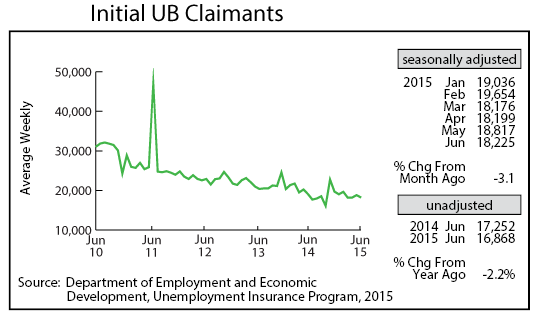by Dave Senf
July 2015
Note: All data except for Minnesota's PMI have been seasonally adjusted. See the feature article in the Minnesota Employment Review, May 2010, for more information on the Minnesota Index.
The Minnesota Index climbed 0.2 percent for the third consecutive month in June, an indicator that Minnesota's economy continues to expand at a solid rate. Since 1979, Minnesota's economy in non-recession months has average 0.25 monthly gains. June's 0.2 is below average but still solid. The U.S. index also rose 0.2 last month, marking the fourth month in a row that the U.S. index increased 0.2 percent. The Minnesota index advanced just a tad slower than the U.S. index over the first half of the year, as Minnesota's index rose 1. 4 percent while the U.S. index jumped 1.5 percent.
June's index advance was held in check by an increase in the state's unemployment rate. The unemployment rate ticked up from 3.8 percent in May to 3.9 percent in June. This is the second month in a row with a 0.1 percentage point uptick. The 3.9 percent rate is the highest in a year. The upward drift in Minnesota's unemployment rate is not all negative as the labor force has increased 57,000 since last June, and 54,600 of the increase was employment. The negative news over the last 12 months is the 2,100 increase in unemployed workers, also part of the labor force.
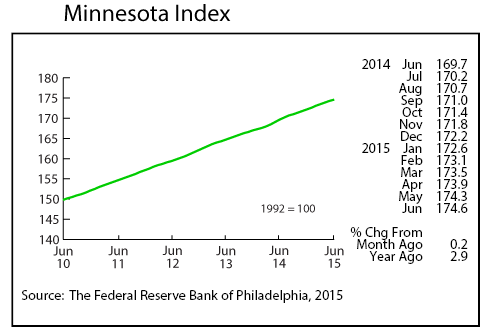
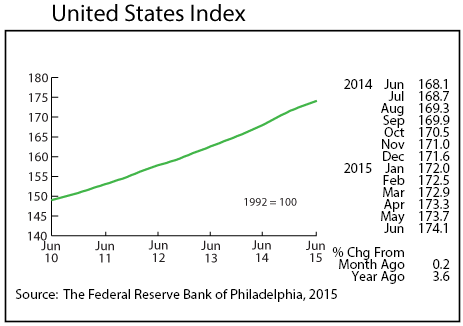
Adjusted Wage and Salary Employment, after holding steady in May, rose by 2,900 jobs in June. Private sector payrolls expanded by 3,600 positions while public sector payrolls fell by 600 positions. Educational and Health Services along with Construction accounted for most of the private sector hiring. Manufacturing and Trade, Transportation, and Utilities payroll numbers were trimmed slightly. The 2,600 Construction jobs added in June pushed Construction employment to its highest level since July 2008.
Minnesota's unadjusted over-the-year job growth inched up to 1.5 percent in June while the U.S rate increased 2.1 percent. Minnesota's job growth on a year-over-year basis for the first six months of 2015 was 1.6 percent compared to the U.S. 2.2 percent rate.
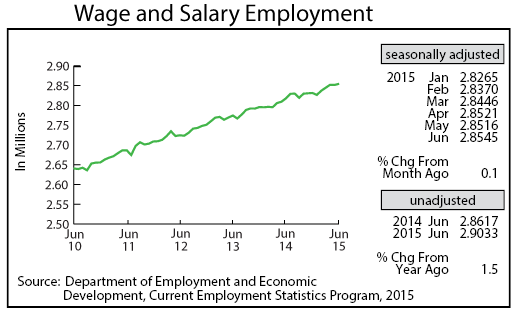
Minnesota's adjusted online Help-Wanted Ads barely changed in June, inching up 0.1 percent. Since U.S. online job advertising fell 2.6 percent in June, Minnesota's share of nationwide advertising inched up to 2.5 percent. Minnesota's share of national online help-wanted ads continues to run ahead of the state's share of national employment, 2.0 percent, which suggest that demand for workers in the state continues to be stronger than nationally.
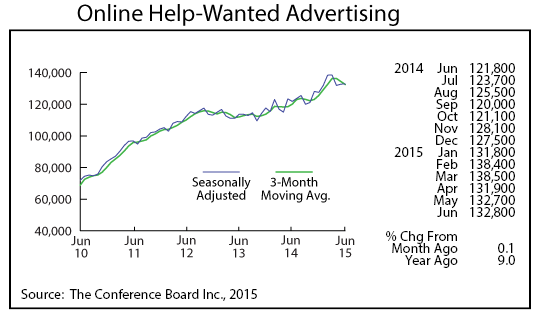
Minnesota's Purchasing Managers' Index (PMI) bounced back in June, advancing to 54.3, the highest reading since February. The uptick in the PMI suggests that Minnesota businesses see the economy expanding faster over the next few months than they did during the previous few months. An index number greater than 50 indicates an expansionary economy over the next few months. Minnesota's index, after trailing the U.S. index over the previous three months, topped the U.S. index in June.
Adjusted Manufacturing Hours were unchanged in June, averaging 40.6 hours per week for the second month in a row. Factory hours are down significantly from a year ago but are running right at the 46-year average of 40.6 hours per week during non-recession months.
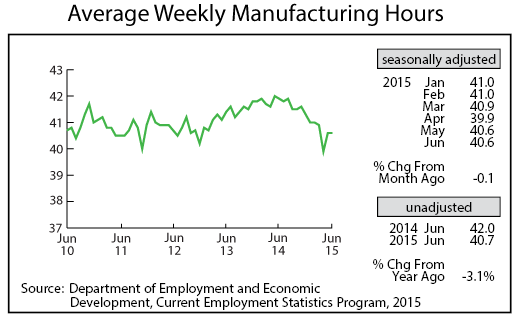
Manufacturing Earnings dipped slightly to $826.06 and are also down from a year ago. Inflation adjusted manufacturing paychecks are 1.4 percent lower than 12 months ago before adjusting for seasonality.
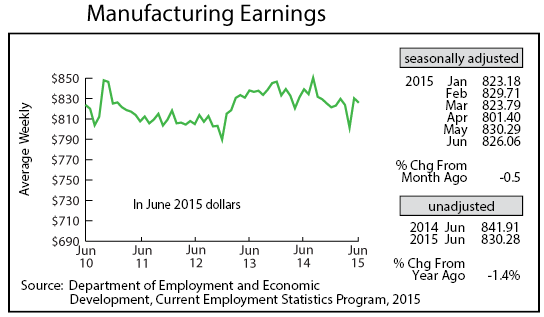
The Minnesota Leading Index partially recovered in June after a sharp decline in May. June's 1.21 reading suggests that economic activity in Minnesota will increase by 1.2 percent over the next six months or a 2.4 percent annual rate. That would be nearly twice as fast as the 1.4 percent growth achieved in 2014 and higher than the 1.7 percent average experienced over the last four years.
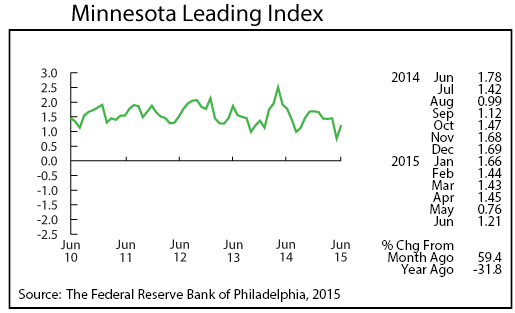
Residential Building Permits were virtually unchanged in June with 1,803 permits issued. Home building activity in Minnesota this year is up from last year's disappointing pace but remains below the average historical rate. Building permits issued through the first six months of 2015 totaled 10,979. That is the highest total since 2006 but the 34th lowest level over the last 46 years.
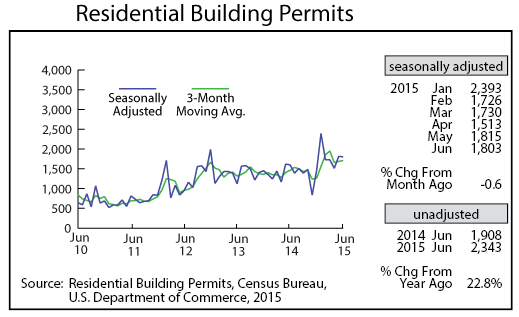
Adjusted Initial Claims for Unemployment Benefits (UB) dipped 3.1 percent in June to 18,225. Total initial claims through the first six months of 2015 are the lowest since 2000. The low level of initial claims is a positive indicator for Minnesota's job picture, indicating solid job growth through the second half of the year.
